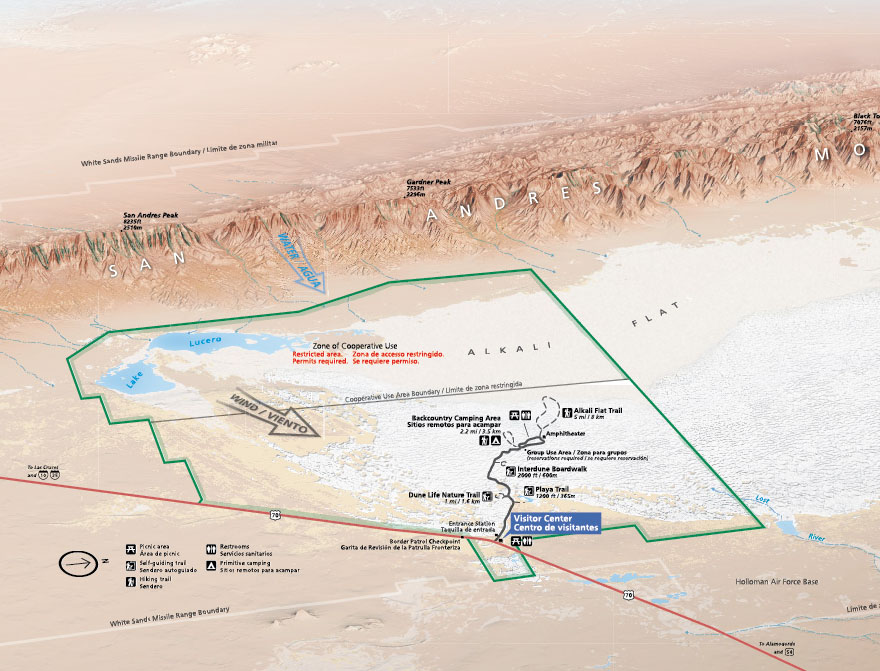White Sands NP--Loop Drive area
White Sands NP--Loop Drive area
Alamogordo, New Mexico 88310
Official WebsiteWhite Sands National Park Official Website
White Sands National Park map
About this Location
Dunes Drive is an eight-mile scenic drive that leads from the visitor center into the heart of the gypsum dunefield. The 16-mile round-trip drive takes approximately 45 minutes. However, you may want to allow additional time to explore the dunes, take photos, and/or learn about the natural and cultural history of the world's largest gypsum dunefield. Along the road, you will find outdoor exhibits, hiking trails, picnic areas, vault toilets, and parking areas.
The first five miles of Dunes Drive are paved and the last three miles are a hard-packed gypsum sand road. The road is suitable for cars, motorcycles, recreational vehicles, and buses.
From time to time, White Sands Missile Range performs missile tests that may close NM-70 to traffic. Depending on the nature of the testing, Dunes Drive may also be closed during missile tests for visitor safety. During these times, the visitor center remains open. Visitors are invited to view the museum exhibits, watch a 17-minute orientation film, and peruse the park store and gift shop while Dunes Drive is closed.
About White Sands National Park
See all hotspots at White Sands National Park
Did you know that this vast expanse of land, known as the Tularosa Basin, has attracted people for over 10,000 years? From atlatls to missiles, the glistening gypsum dunefield of White Sands has witnessed the steady advancement of human history, technology, and engineering. For thousands of years, people have called this place home.
Like a mirage, dazzling white sand dunes shimmer in the tucked-away Tularosa Basin in southern New Mexico. They shift and settle over the Chihuahuan Desert, covering 275 square miles—the largest gypsum dunefield in the world. White Sands National Park preserves more than half of this oasis, its shallow water supply, and the plants and animals living here.
There are over 220 recorded species of birds within White Sands National Park. High temperatures during the day, especially in the summer months, make it unlikely that you will come across these creatures in the heart of the dunefield. However, many of these species are commonly seen in the desert scrub around the visitor center and entrance station.
Content from Official Website and White Sands National Park Official Website
